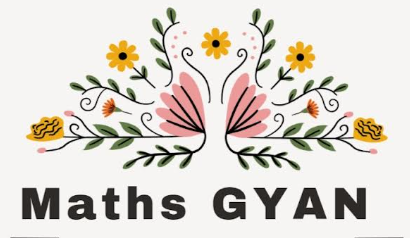Here are 10 multiple-choice questions for the SOF Maths Olympiad for Class 5, based on previous exam patterns, with solutions provided:
1. What is the value of 5 × (8 + 6)?
a) 60
b) 50
c) 70
d) 80
Answer: c) 70
Explanation: First solve inside the parentheses: 8+6=14, then multiply 5×14=70
2. What is the area of a rectangle with a length of 12 cm and a width of 5 cm?
a) 60 cm²
b) 17 cm²
c) 50 cm²
d) 55 cm²
Answer: a) 60 cm²
Explanation: The area of a rectangle is given by the formula Area=Length×Width. So, 12×5==60 cm².
3. Which of the following numbers is divisible by both 2 and 3?
a) 24
b) 35
c) 45
d) 55
Answer: a) 24
Explanation: A number is divisible by 2 if it is even, and divisible by 3 if the sum of its digits is divisible by 3. The sum of digits of 24 is 2+4=6, which is divisible by 3. Also, 24 is even, so it is divisible by both 2 and 3.
4. What is the sum of the first 10 natural numbers?
a) 50
b) 55
c) 60
d) 45
Answer: b) 55
Explanation: The sum of the first nnn natural numbers is given by the formula Sum=n(n+1)2)Sum=10(10+1)=55.
5. If 6 apples cost ₹72, how much would 10 apples cost at the same rate?
a) ₹120
b) ₹140
c) ₹125
d) ₹100
Answer: a) ₹120
Explanation: Cost of 6 apples = ₹72, so the cost of 1 apple = ₹72 ÷ 6 = ₹12. Therefore, the cost of 10 apples = ₹12 × 10 = ₹120.
6. What is the next number in the sequence: 1, 4, 9, 16, 25, ___?
a) 30
b) 36
c) 40
d) 50
Answer: b) 36
Explanation: This is a sequence of square numbers: 12,22,32,42,52,…1^2, 2^2, 3^2, 4^2, 5^2, \dots12,22,32,42,52,…. The next number is 62=366^2 = 3662=36.
7. The perimeter of a square is 36 cm. What is the length of each side?
a) 8 cm
b) 9 cm
c) 10 cm
d) 12 cm
Answer: b) 9 cm
Explanation: The perimeter of a square is given by Perimeter=4×Side length\text{Perimeter} = 4 \times \text{Side length}Perimeter=4×Side length. So, 4×Side length=364 \times \text{Side length} = 364×Side length=36, hence the side length is 36÷4=936 ÷ 4 = 936÷4=9 cm.
8. Which of the following is the smallest fraction?
a) 23\frac{2}{3}32
b) 12\frac{1}{2}21
c) 35\frac{3}{5}53
d) 47\frac{4}{7}74
Answer: b) 12\frac{1}{2}21
Explanation: To compare fractions, convert them to decimal form.
23≈0.6667\frac{2}{3} \approx 0.666732≈0.6667
12=0.5\frac{1}{2} = 0.521=0.5
35=0.6\frac{3}{5} = 0.653=0.6
47≈0.5714\frac{4}{7} \approx 0.571474≈0.5714
Thus, 12\frac{1}{2}21 is the smallest.
9. What is the least common multiple (LCM) of 4 and 6?
a) 10
b) 12
c) 24
d) 18
Answer: b) 12
Explanation: The multiples of 4 are 4,8,12,16,…4, 8, 12, 16, ,…, and the multiples of 6 are 6,12,18,…6, 12, 18, ,…. The smallest common multiple is 12.
10. A rectangle has a length of 15 cm and a width of 7 cm. What is the diagonal of the rectangle? (Use Pythagoras theorem)
a) 18 cm
b) 16 cm
c) 17 cm
d) 14 cm
Answer: c) 17 cm
Explanation: Using the Pythagorean theorem c2=a2+b2c^2 = a^2 + b^2c2=a2+b2, where a=15a = 15a=15 and b=7b = 7b=7,
c2=152+72=225+49=274c^2 = 15^2 + 7^2 = 225 + 49 = 274c2=152+72=225+49=274,
so c=274≈16.55c = \sqrt{274} \approx 16.55c=274≈16.55, which is approximately 17 cm.
